
Road Trip! Boating With Your Dog Paw Care



















Road Trip! Boating With Your Dog Paw Care


















A recent study funded by the National Institute of Health, conducted at the University of Pennsylvania School of Veterinary Medicine, shows that medical scent dogs can detect a unique COVID-19 odor “with impressive accuracy.” This finding may become applicable at airports or significant events as communities continue to monitor the virus.
Training is still evolving on the scent task as scientists work through challenges presented by different stages of the virus. (Active vs. Post-infection) However, lessons learned during this virus training event, which included nine Maryland medical scent dogs, can improve training for other programs that train dogs on specific medical scents.

Dying from Rabies in the U.S. is unheard of, but did you know that Rabies kills almost 60,000 people worldwide annually? Something to keep in mind when you travel outside of the country, particularly to areas of the world with higher poverty levels where rabies vaccines may not be mandatory or available. According to PLOS Neglected Tropical Diseases, 50 percent of the victims contracted the illness from a dog bite.

The ultimate canine lifeguard would be the Newfoundland. Complete with water-resistant coats and webbed feet, the dogs were originally bred as fishermen’s helpers to rescue people from drowning. Newfie owners have even reported that their pets will instinctively try to “rescue” them when swimming at home in their pool!

Most dogs need approximately an ounce of fluid per pound of body weight per day, so a 10-pound dog needs a little over a cup of fresh water daily. An average water dog weighing in around 70lbs will need over 1/2 of a gallon of fresh water and more if they are enjoying warm weather activity.


Automaker Prioritizes Pets with Release of Eleven Pet Accessories
Equipped for Vehicles
Subaru of America, Inc. recently announced the launch of a new line of pet accessories designed to keep pets comfortable in their vehicles. Comprised of eleven unique items equipped for Subaru vehicles, the pet accessories ensure that owners can take their furry companions on road trips and remain protected.
“Protecting pets is a key component of our Subaru Loves Pets commitment, and that includes protecting pets on the road,” said Joe Daugherty, Director – Accessories, Subaru of America, Inc.
“At Subaru, we know that pets are part of the family, and as our owners head out for warmer weather adventures with furry friends in tow, we want to keep them safe and comfortable for the ride.”
The new line of pet accessories features a variety of pet-friendly gear and accessories designed to keep pets comfortable during road trip adventures. The items were designed using state-of the-art technology to maximize pet comfort.
The accessories, available for purchase at Subaru Parts Online and at Subaru retailers nationwide, includes:
Pet-Friendly Padded Cargo Liner
Console Lid Protector
Collapsible Pet Kennel
Pet-Friendly Padded Seat Protector
Rear Seat Cover
Pet Ramp
Sleepypod® Pet Harness
Sleepypod® Carrier & Mobile Bed
Sleepypod® Pet Travel Bowl
Rear Bumper Protector Mat
Pet Lover License Plate Frames.
Sleepypod® products meet the highest standards for safety to reduce pet exposure to possible hazards. To protect the joy of driving with pets, Sleepypod dog harnesses and pet carriers are put through stringent safety tests to include static material tensile testing and dynamic crash testing at the standard set for child safety restraints.
“Sleepypod carriers and car harnesses are packed with proprietary technology that is the result of an intensive engineering effort by Sleepypod’s design team to help keep pets safer when traveling in cars,” said Michael Leung, Sleepypod co-founder and lead product designer. “The launch by Subaru of a new pet accessories line is a tremendous demonstration of their dedication to the well-being of pets.”
The Subaru Pet Accessories line is part of Subaru Loves Pets, the automaker’s commitment to protect pets everywhere. For more information about Subaru Loves Pets, please visit Gateway Subaru, Delmar, MD 410-896-3800

Oh yes, they did!
It would seem that food manufacturers are always trying to hide things from us. Xylitol, which is toxic to our dogs, is now being labeled as "Birch Sugar." Birch Sugar sounds more "natural" and healthy but make no mistake; it's just as toxic to the dogs. Birch Sugar/Xylitol is commonly found in many brands of peanut butter and other pre-sweetened processed foods. Please read labels; your dog depends on you to protect them.

According to the Public Broadcasting System (PBS), a Bloodhound’s sense of smell is so spot on that it can be admitted as evidence in a court of law. Bloodhounds can also follow tracks that are over 300 hours old and can stay on a trail for over 130 miles!
September 11th, 2021 9 am - 4 pm
Frontier Town Western Theme Park

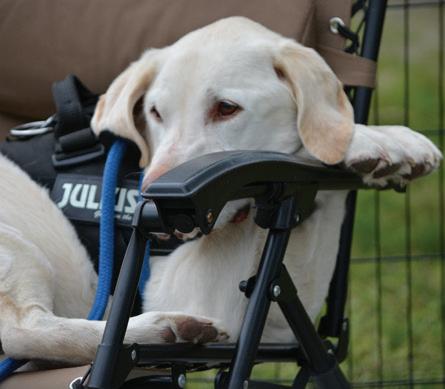
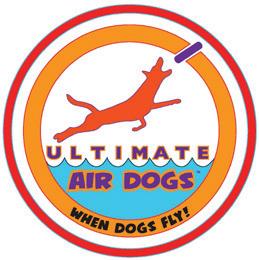



Advance tickets are just $12 $15 at the gate
PoochPalooza.com
Your Dog Wants to Be Here!





September 11, 2021
INSIDE the Frontier Town Western Theme Park! West Ocean City, Maryland Rain or Shine

• Event Sign-up Boards will be found near the Delmarva Unleashed booth. Sign up early, limited events fill quickly!
Highlighted events on the official schedule require sign-up.
• Micro Chips $25 Rabies Shots $5
Will be available at the Precious Paws Animal Hospital tent. 3 year vaccines available when you bring proof of current vaccination. Dr. John Maniatty - Event Vet on Property.
• Ultimate Air Dogs “Try It” will be held between each Splash. Sign up required, modest fee. Visit their booth for details.
• Lure Chase - presented by Delmarva Unleashed $10 fee. Tickets are available in advance at PoochPalooza.com/shop or, at the Delmarva Unleashed booth and at the gate.
• Cover Model search is FREE
• Pie Eating ingredients include - Pumpkin, Sweet Potato and Whipped Cream
• Have lunch in the Western Saloon
• Enjoy breakfast at the Longhorn
• Roving Photography by Beached Paws Photography
• Retractable leashes are not permitted! You are welcome to borrow one of ours while you are on festival grounds.
Skip the line!
Get Advance Tickets at PoochPalooza.com/shop
Vendor Scrabble
Collect game pieces when you visit vendor booths at the festival. (No purchase required)
Make a purchase and gain additional game pieces.
Played like traditional scrabble, highest scoring word on our game board wins! In the event of a tie, winner will be chosen by a hat draw.
All updates will appear on our Facebook pages!
On going activities include Lure Chasing, the Agility Play Area
If your dog can fetch it’s welcome to participate. 11:00
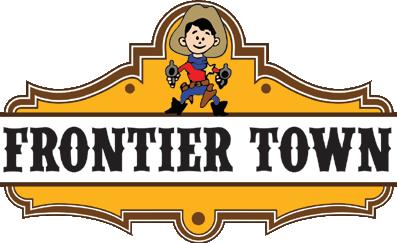





From puppucchinos to canine menus and beer, there are lots of places that will welcome your dog while you're on vacation. While this list is not all-inclusive, it does include some of our favorites.
Tell them Delmarva Unleashed sent you!
While dogs are not allowed on the Boardwalk during the season, you can typically slip from the street to the deck for some excellent Boardwalk dining. They are famous for their hot dogs, and it’s something you can both enjoy. Oh, they have other great food too! Who knows, you might even be one to master the “Ball Buster!”
— On the Boardwalk between 11th & 12th St.


Were you looking for that not-so-average pizza?
Dry Dock 28 offers an excellent menu for the family in general but focus on that unique pizza you will remember long after your visit. Here you can enjoy your meal with your dog on their spacious fenced deck. —28th St. & Coastal Highway
Fish Tales is an Ocean City landmark where you and your dog can enjoy the dock area for drinks and great food. You can even enjoy watching fish weigh-in from local head boats that dock there. —22nd St. on the Bay
45 St. Taphouse - 4507 Coastal Highway
Angler Restaurant - 312 Talbot St
Anthony's Carryout - 1608 N. Philadelphia Ave (really on Coastal Highway)
Crab Alley - 9703 Golf Course Rd (Harbor West Ocean City)


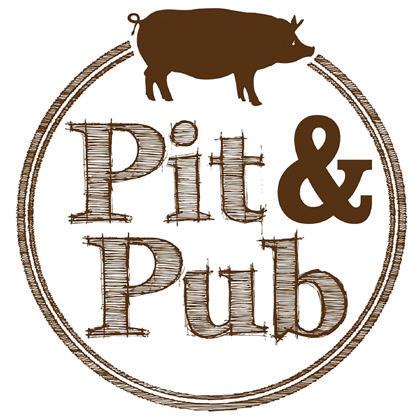
Relax on the dock with your dog and enjoy the "original" orange crush. While there are lots of imitators, nothing takes like the original. This is truly where the cocktail was created. While you relax on the water, you can enjoy watching the commercial fishing boats arrive to unload their catch.
— 12841 Harbor Rd, Commercial Fishing Harbor, West Ocean City.
Serving up some of the finest pit beef, chicken, and so much more. It smells so good that you and your dog both will be drooling. The front porch is a great place to dine and is located in an area with limited openings for the curious dog to sneak out. —28th St. & Coastal Highway location.
de Lazy Lizard - 305 First St, Bayside
Dumsers Dairyland - 49 St. Coastal Highway
Longboard Cafe - 6701 Coastal Highway
Macky's Bayside Bar & Grill - 5301 Coastal Highway, Bayside
Micky Fins - 12952 Inlet Isle Lane, West Ocean City
Sunset Grill - 12933 Sunset Ave. (Harbor in West Ocean City)
Tailchasers - 12203 Coastal Highway

MMore dogs today are traveling with their humans than ever documented before, and the travel industry is taking notice, as more hotels are offering pet rooms and airlines are providing safer options for pets on the go.
For dogs who are not seasoned travelers, airports, and long car rides can be stressful. It is important to make efforts to minimize stress and confusion as well as to take safety precautions to make the trip a smooth, happy and safe one.
Often, the most comfortable way to travel with a dog is by car. This form of transportation provides the best opportunity to tend effectively to their needs, affording potty breaks on demand and walks for a restless canine. However, not all dogs enjoy riding in vehicles. While some dogs jump at the opportunity for a car ride, others detest it. If your dog, is the later, you will want to begin a training regimen for a more pleasant trip for everyone.
by Brandon PhillipsStart with time just to explore the parked vehicle both inside and out. Then advance to short trips around the block. Creature comforts, like blankets and toys, will help to make the environment more familiar, just as it would with a child. Provide snacks that are only available on car rides, making them extra special. The goal is to have your dog look forward to the car ride. Work towards a goal of longer rides
that include potty breaks and or short walks before you leave for vacation.
There is a percentage of dogs that simply don’t do well in moving vehicles. According to PetMD, young dogs whose ear structures are not fully developed may have some balance problems and motion will facilitate nausea. Many of these dogs will outgrow motion sickness when fully developed. However, there is no guarantee as there can be other contributing factors such as the stress of travel itself. If your dog only rides in the car to the vet, he will always assume that is what awaits him when the car stops. There are a lot of merits in a “joy” ride!
Since dogs don’t turn green before vomiting begins, look for signs of restlessness, excessive drooling, and whining that may indicate motion sickness is taking hold. It is said that your dog will experience fewer symptoms when facing forward during the ride, and some people will say, do even better in a front seat, much like a human. However, airbags pose a more serious threat to a dog during an accident so a better option would be a canine seatbelt that attaches to the back seat and helps keep the dog facing forward. Dog owners that crate feel traveling with the crate offers the best option and will contain any vomit that may occur during the trip.
Other tips for dogs battling motion sickness are to crack the windows just a bit. This helps balance the inside and outside pressure for your dog and may help ease uncomfortable feelings. Be sure the car temperature is on the cooler side as heat will only exaggerate symptoms. It is often said that withholding food before a trip will ease


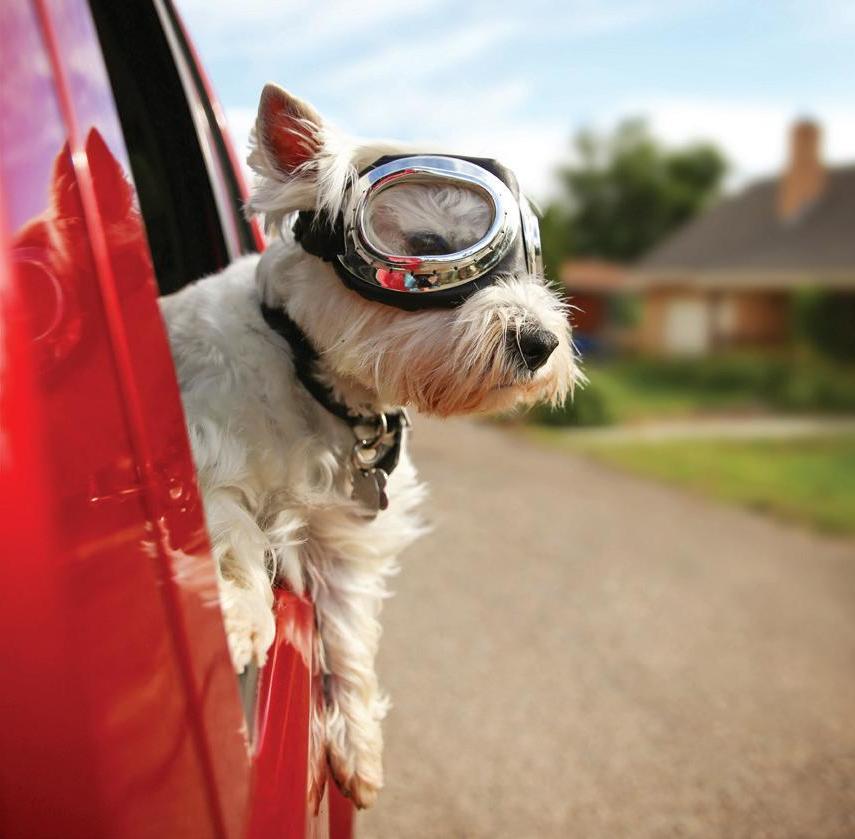
According to Kurgo Travel Statistics, 12% of dog’s ride with their head out of the car window. Doing so puts your dog at risk for serious eye injury. And, because many will keep their mouths open while enjoying the air, they are at risk of swallowing something that really is just forced down their throats at 50 miles an hour. Bugs at the very least.
Think about this, even motorcyclist drive at the minimum with sunglasses. They also know not to ride down the road with their mouths wide open. Not all dogs figure that out!
If your dog just has to ride with it’s head out of the window, purchase a quality pair of goggles for him. Canine goggles are made to fit a dogs head and many now offer a level of UV protection for them as well. Dogs seem to adjust quickly to wearing them and they are now available in a variety of sizes and colors to suit your dogs individual style.
There is also a fall risk, as in out of the window, should your car come to a sudden stop!
symptoms, but for a percentage of dogs having a light meal will stave off motion sickness. Again taking the time to acclimate your dog to car travel will help you determine which route is best to take for your dog should motion sickness pose a problem.
If your dog will be traveling via air or train be sure they are comfortable inside a crate or an airline approved pet carrier. (Each airline has specifics, and some are more canine friendly than others.) It’s imperative that the carrier is suited to your individual dog; offering adequate room to stand, turn around and lie down comfortably. You will also want to be sure it’s well ventilated for both overall physical and mental health.
Start by leaving the carrier out in the dogs regular environment and with the door open, so the dog can come and go as it pleases. Be sure it’s inviting on the inside with a familiar blanket, crate pad or toys. Progress to short times inside the carrier with the door closed and increase to larger intervals that would equate the air travel time.
Begin your canine preparedness for your travel plans as soon as possible so that the travel experience is simply second nature for your dog. Your dog will arrive at his destination eager to dig into the vacation, just like the rest of the family!



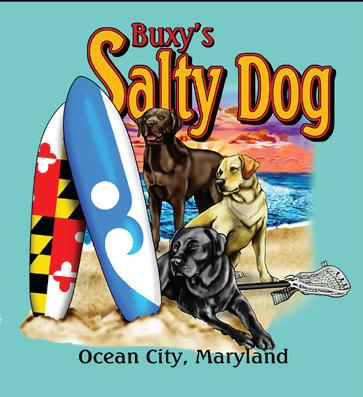

FFor the next couple of editions of Delmarva Unleashed, I wanted to devote my article space to some common misconceptions in the dog training and care industry. In recent years, more and more pet professionals are reaching to science instead of simply what was done in the past, which is great for all of us. The movements involving fear-free and force-free veterinary care and grooming make those events much easier for both the dogs and people involved. Fortunately, many trainers have only ever used force-free and fear-free techniques. Many trainers have transitioned from older, coercion-based methods to positive lessons because they see the fallout from those outdated techniques and tools. Unfortunately, there are still professionals in each industry who are stuck in the past.
The following is from a collection of statements that I have heard myself or that clients have echoed from their
veterinarian, groomer, breeder, or another trainer and explain how each technique is incorrect.
I must state that I know there are many well-qualified pet professionals out there:
Veterinarians who take the time to study behavior.
Groomers who know the value in going slow and letting dogs adapt to the process.
Breeders who do a fantastic job raising puppies.
Trainers who achieve amazing results without any force or fear.
I hope these people will become the new normal and will start to outnumber those who fall back on the debunked dominance theory and force-based methods, and I hope that this helps set a better standard of care and life for our beloved dogs.
“The Golden Paw” (aka, the Best Of....in the Eastern Shore’s Dog World)
Delmarva Unleashed

Canine Favorite
Delmarva Unleashed is often asked for referrals.
Which groomer? Which kennel? Can you recommend a vet?
Which dog food should I feed? Where can we take the dogs to eat?
It’s been five years since we last polled our readers, and it’s time to see who you would refer friends and family too. Because the shore is so large, we will break this down by region and include a few overall categories.
Polling will occur on DelmarvaUnleashed.com. Follow us on Facebook for up-to-date information.
Winners will be announced in the Holiday issue, just in time for your holiday, shopping, holiday grooming, holiday travel, etc... Winners will receive a decal for the door of their business indicating they are a Delmarva Unleashed reader’s favorite!
Contact us to be sure your business is on the ballot!
410-726-7334
Creative@grandlivingmag.com
Now, to the three myths I intend to bust today:
“My veterinarian told me that I have to use a prong collar on my big dog because nothing else will work to get his attention when he is excited—that is the only way to make sure everyone is safe.”
Nope. I am sorry to say that your veterinarian needs to read some updated literature. I would hope that when it comes to all things medical, they are staying current on the research and recommendations. As far as behavior, this is a very, very common misconception.
Now, I appreciate your vet’s concern for the safety of those around you and your dog; it is commendable that they are concerned about other people who your dog’s behavior may impact. I agree that a large dog who is not listening or paying attention to its person can potentially harm someone simply because of size. I have been nearly bowled over by dogs who are excited and weigh over 100 pounds. It can be worrisome at a minimum. However, there is a problem with your vet’s statement, which makes it clear that they aren’t thinking about the situation from the dog’s perspective.
Part of your job as the human at the other end of the leash is to ensure that your dog is not in a position they don’t know how to handle and if you find yourself in one, you need to be able to maneuver out of it. If a dog is so excited, either happy or upset, that they will only respond to a physical interruption, they are way past their
threshold, and you need to get them out of that situation. Relying on a prong collar to get their attention or a shock to bring them “back to reality” is only adding more excitement and stress to an exciting or stressful situation. The better thing to do is find a trainer who will use gradual desensitization and counter conditioning and no pinch, choke, prong, or shock collars. Saying that a dog requires harsh handling because of its breed or size equates to saying that humans respond to more brutal treatment because of their race or size. We owe our dogs better.
“A trainer told me that my dog doesn’t listen to me because I am not Alpha; it’s my husband who is Alpha and that my dog will never respect me because I let her up on the couch with me.”
It sounds like that trainer puts together pieces of a puzzle all wrong and relies on a theory that holds no water, one that has been disproved many times.
Briefly, the idea behind “dominance theory” is that we need to control our dogs, so they don’t take over. According to that theory, we must show assertive/stern/aggressive control (etc.), or the dog will walk all over us. In reality, most dogs don’t want to be the boss, just like most people don’t want to be president or mayor or even on the city council. Most of us are ok with letting other qualified people do those things. That’s how dogs are; they are not plotting to overthrow us the moment we show weakness or kindness. Our dogs are better than that.
It is much more likely that your dog listens to your husband because human males tend to be taller, larger framed, and have deeper voices than women. That alone makes him seem a little more intimidating than you. If your husband spends more time doing things with the dog—walks, play, working, he is simply getting more experience with your husband and has had more chances to earn good and bad consequences from him. If you are not around your dog as much or your time with him is spent lounging, and you are not asking a lot of him, he simply has not generalized that you are worth listening to as well. You may need to spend more time with your dog—go for walks, play fetch, teach tricks, games, or work on basic obedience cues. If you can, increase the time you spend with your dog interacting and asking for things. You will be providing feedback (when he is right and wrong), so he gets the experience with you that he has likely had with your husband. It is also possible that you are not confident in yourself, which means that your dog will not have confidence in you. When you are asking your dog to do something, speak in a matter-of-fact tone. You do not need to be harsh or loud, and you don’t need to get in the dog’s face. Just say what you want him to do. One of my favorite tricks is asking dogs to perform cues or tricks with the command being a whisper—louder is not better; it is just more noise.
“I had a trainer who told me that a dog who doesn’t learn using traditional methods simply isn’t smart enough.”
“I had a trainer who told me that a dog who doesn’t learn using traditional methods simply isn’t smart enough.”
“I had a trainer who told me that a dog who doesn’t learn using traditional methods is very stubborn.”
“I had a trainer who told me that a dog who doesn’t learn using traditional methods thinks he is the boss and is trying to be dominant.”
It sounds like these trainers (or maybe all the same trainer) are looking for excuses for why their methods are failing by blaming the dog for not learning in a way familiar to the trainer—because it can’t be their fault. Instead of considering the training method as the reason for failure, they simply blame the dog for not being intelligent, motivated, or bossy. The thing is, when a dog can’t learn, it is usually the fault of humans. For a human comparison, if a child struggles in school, do we blame the child for being stubborn, dominant, or not smart enough? In the past, yes. Today, we realize that everyone learns differently and do our best to accommodate that.
What gets characterized as stubborn is often a dog who is not motivated or who is scared. That sounds like a good reason to find a better training method.

TThere are more than 850 species of ticks on the planet, most host parasites. Many of those parasites are problematic for both humans and canines.
Ticks are technically arachnids, not insects.
Ticks generally crawl up their hosts from the tips of grasses and shrubs and can attach within seconds. Many will scour their host, seeking warm moist areas, such as the groin, ears, or tail areas.
Tick saliva acts as cement to anchor the tick in place; this is why many are so difficult to remove. It is also believed to be responsible for the itchy, irritated lump left behind after proper tick removal.
A bite from the Lone Star Tick can cause rare allergies to red meat in humans. Dogs can also develop this allergy and often react with itching, skin lesions, and hair loss if their diets contain beef, lamb, or pork. Lone Star ticks have been seen all over Delmarva.
Ticks have natural predators; they include frogs, lizards, squirrels, opossum, guinea fowl, and wild turkeys. They are also consumed by wolf spiders, chiggers, and some large ants. Unfortunately, their numbers often outweigh their predators, making some areas, like Delmarva, endemic areas with high transmission rates of the parasites they harbor.
by Polly ElliottLavender, peppermint, citronella, lemon grass, cedar, rose geranium, and citrus are fragrances proven to deter ticks. It has been proven many times over that ticks will avoid latching onto anything that smells of these fragrances.
According to Igenex Labs, "The time of day when ticks are most active can vary from species to species, as some prefer to hunt during the cooler and more humid hours of the early morning and evenings. Others are more active at mid-day when it is hotter and dryer."
Have you been camping for the weekend? Be sure to toss your dog's bedding in the washer and dryer. A spin in the dryer will literally "crisp" them to death.
Ticks typically do not live more than 48 hours in our homes unless attached to a host. Tick.com tells us that the length of time a tick stays attached depends on the tick species, tick life stage, and host response to the bite. Generally, if undisturbed, larvae remain attached and feeding for about 3 days, nymphs for 3-4 days, and adult females for 7-10 days.
According to the Center for Disease Control (CDC), ticks need to be attached for a minimum of 36 hours
to transmit Lyme disease. Still, there are discrepancies with other scientists that think they only need 24 hours to transfer Lyme. Other studies conducted at the CDC have found spirochetes (the parasite that causes Lyme Disease) in tick saliva, indicating some ticks can transmit the disease as soon as they bite; before active feeding begins. Rickettsia and the Powassan virus have been shown to transmit in less than 15 minutes. There is no safe time for a tick to be attached to you or your dog. Untreated tick-borne illness can trigger an auto-immune disease in both humans and canines. If you are bitten and experience flu-like symptoms, visit your doctor for an evaluation. Symptoms in dogs are often similar, with the most visible signs including lethargy, lameness, and loss of appetite. Your veterinary
professional can run a blood test right in the office and get your dog on antibiotics quickly to help prevent secondary problems from arising. Get Your Ticket at PoochPalooza.com



•

For more than 90 years, Purina has been guided by the belief that pets and people are better together. I can attest that my own dog, Stew, has made my life better, and I cannot imagine having to choose between his safety or my own. Unfortunately, that decision is being made every day by domestic violence victims who want to leave but can't because there is no safe place to go with their pets.
According to the National Coalition Against Domestic Violence, 71% of pet owners entering domestic violence shelters report that their abuser had threatened, injured or killed family pets. This is why nearly half of survivors will delay leaving abuse if they cannot take their pets with them. As few as 10% of domestic violence shelters in the United States accept pets, and we want to change that. We envision a world where no one is trapped in abuse because they can't take their whole family with them.
The inspiration for what developed into the Purple Leash Project came nearly seven years ago when one of our associates read about the difficult decision that many domestic violence survivors with pets were being forced to make. It didn't seem fair that pets, who may be the only source of unconditional love and support for a
victim, weren't being considered when it came to sheltering survivors. So, we decided to help.
After working to support New York's largest domestic violence shelter for many years, in 2019 Purina took the step to make a national impact by creating the Purple Leash Project. In partnership with the national nonprofit Red Rover, our goal is to raise awareness of the issue and increase the number of pet-friendly domestic violence shelters in the United States. And we have committed nearly $1,000,000 to support the cause.
In addition to offering grant support for shelter upgrades, Purina is donating pet food, supplies and other resources for pet owners escaping use. We’re also advocating in D.C. for more federal resources for domestic abuse survivors with pets. Since 2019, Purina and Red Rover have gifted 21 grants totaling more than $375,000 to help equip domestic violence shelters to receive and care for pets, leaving survivors with more options when trying to flee a dangerous situation.
Now, 48 of the U.S. states have at least one pet-friendly domestic violence shelter. The Purple Leash Project team hopes to work with domestic violence service providers
in Hawaii and Rhode Island to close the gap. In the meantime, Purina and its associates are working to bring more awareness to this issue and increase the number of pet-friendly shelters across the country, and I invite you to join us.
Purina trademarks are owned by Socuite des Produits Nestle S.A. Any other marks are property of their respective owners
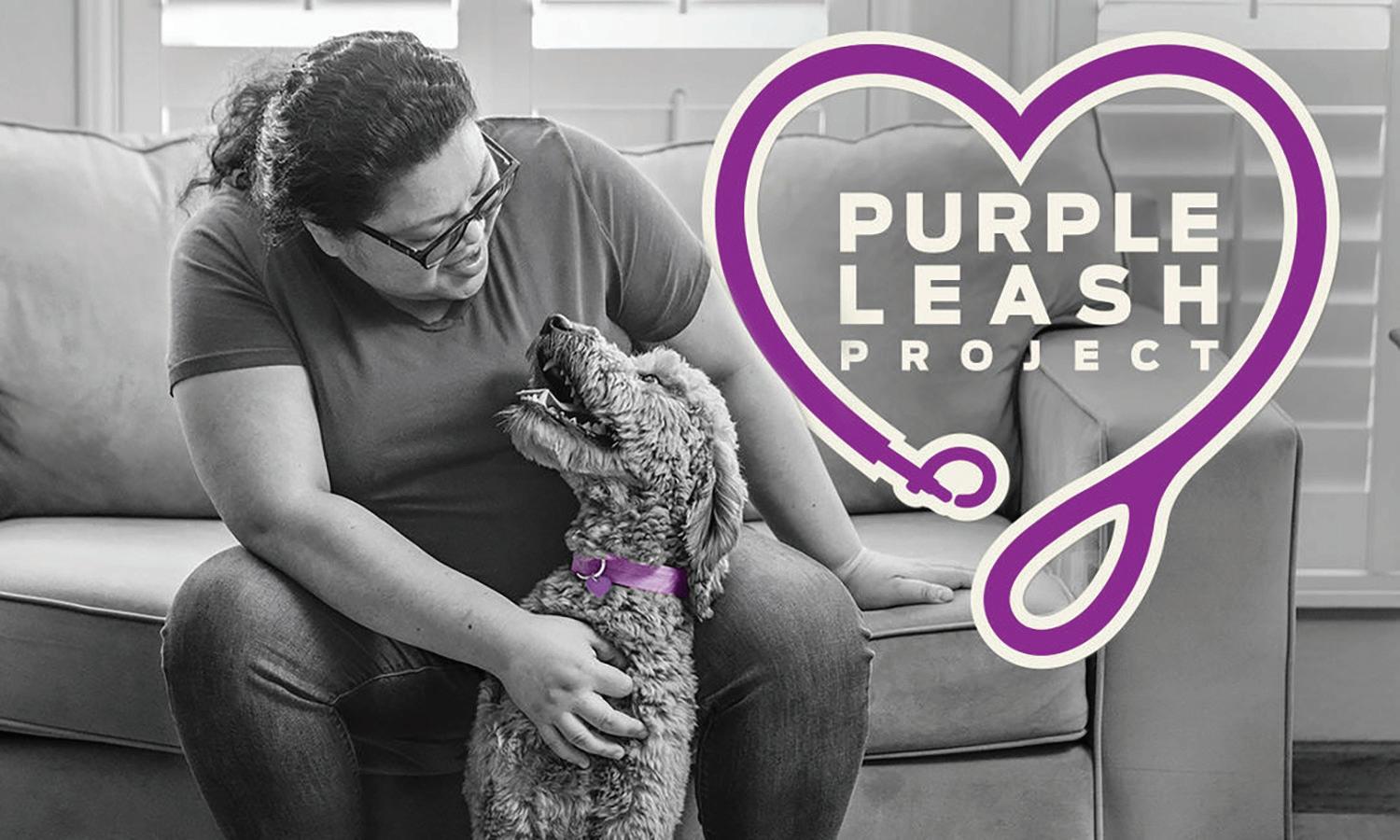

I was looking for a trainer who offers board and train services, and they say they offer all positive reinforcement. They seem friendly, and they use hot dogs as treats, but I have heard a couple of things about bad experiences people have had there. How do I know if a board and train facility is good or not?
Ooh, that is a great question. First, any training facility or boarding facility should be transparent about the methods and tools they use and should happily accommodate you setting up a time to visit, and see how your dog would spend their time at the place. If they are not willing to let you set up a time to visit (appointments may be necessary to ensure there is adequate staff to show you around while other staff are working with dogs; it’s possibily a liability thing), or are not open about all methods and tools they use, it’s probably not the best idea.
If you have heard some bad things, I would first try to talk to those people who had firsthand experience. I would also speak to the trainer/owner

at the facility. Having frank discussions with all parties involved will get you a better idea of the truth. The thing is, it’s possible there are things both parties will not want to disclose to you, but talking to both will get you an idea of how close to one side or the other or the middle, the truth lies.
Now, a couple of things that stand out to me in your description of the place:
—When it comes to training, it seems that those who use those coercion-based techniques and tools have realized that “positive training” or “all positive reinforcement” sounds like the right thing to say. All too often, that’s all it is. It is a nice thing to say, and they don’t follow through with it.
First, a quick review of the quadrants of Operant Conditioning; remember that the positive only refers to adding something to the situation, and the negative refers to removing something from the situation. Reinforcement is a reward meant to encourage more of a behavior, whereas punishment is a consequence the dog does not like, which is intended to discourage the behavior:








MichellesPrettyPaws.com


Positive Punishment: adding something the dog does not like, ranging from a simple, quick “no” up to a shock, collar pop, being pulled up and hung momentarily by their collar (yes, trainers still do this), an alpha roll, or a being hit by the human. This is done in hopes that the dog will not repeat the behavior that earned that consequence.
Negative Punishment: Removal of something the dog likes (treat, toy, attention), hoping that the dog will not repeat that behavior because he lost something he likes as a result.
Positive Reinforcement: Adding something the dog likes ranging from a pat on the head to verbal praise, a toy, a treat, sniffing, literally anything
that behavior again.
Negative Reinforcement: Removal of something the dog does not like (collar pressure, shock, vibration collar, citronella spray) in hopes that the dog will continue offering the desired behavior as a result of avoiding the thing they don’t like.
Most trainers use all four quadrants to some degree, which is fine. You can’t successfully train with just one quadrant. You need to let the dog know when they have done well and when they have made a mistake. The degree to which these are done well and when they have made a mistake.
The degree to which these are done is where we run into trouble. Some trainers will use positive reinforcement, like hot dogs, as rewards for good behavior but then use a harsh correction like a collar shock or physical force as the punishment. Those two extremes can be quite disconcerting to dogs. A person should not have to use harsh physical corrections in the course of routine training. If the dog is struggling, there is something wrong with the situation that the human needs to change.
—They use all hot dogs, which sounds yummy to dogs, but this can indicate that the environment is so stressful (due to out-of-proportion corrections) that the only treats they will eat are the very best ones. When you are stressed from work, you
might not be hungry unless the idea of your favorite meal is suggested.
It’s the same for dogs. They will eat something yummy even if stressed, but it has to be something special.
When you set up that visit to the facility, look at the dogs. Are they wearing prong, choke, pinch, or shock collars? If the dogs are, they are using positive punishment and negative reinforcement with physical corrections. If they use these and claim to be “all positive,” they are either lying to you or simply do not understand behavior. If the trainer/ owner cannot answer those questions or does not have an understanding of the quadrants of Operant Conditioning, you should look elsewhere.
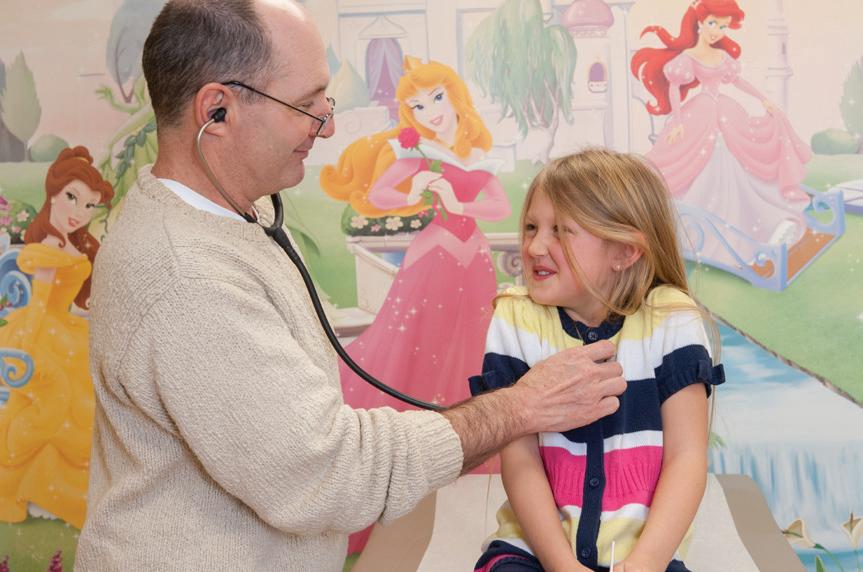




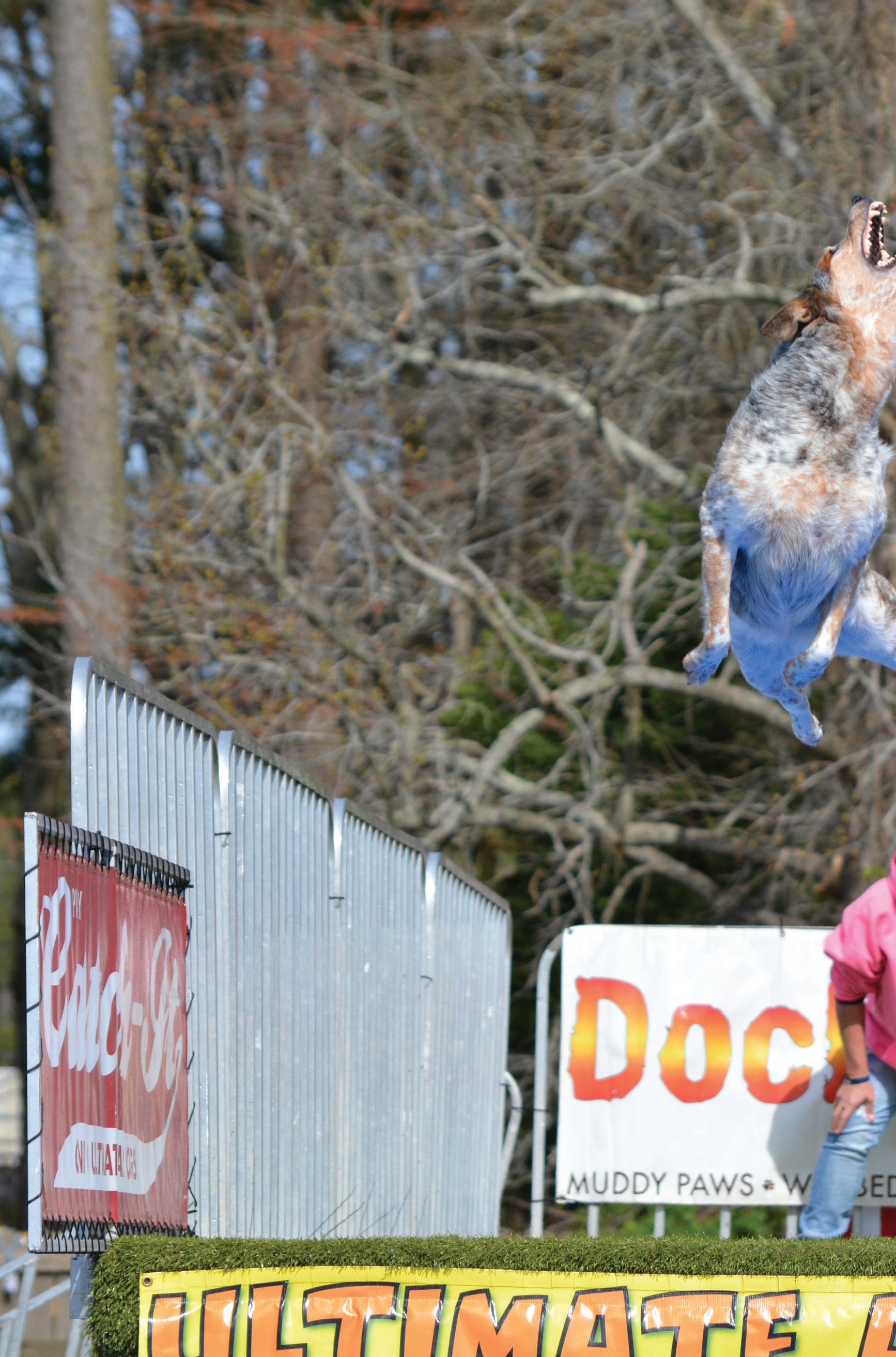 Pooch Palooza
Pooch Palooza

 by Brandon Phillips
by Brandon Phillips
Unfortunately, dogs’ paws are an often overlooked in general health care. In actuality, their continued care is vital to the overall health of the dog. Dogs with paw pain or irritation may not be inclined to exercise as much, leading to joint issues, obesity, excess nervous energy, and other concerns.
Nail care is essential. Your dog’s nails should sit just above the ground when your dog is standing on all fours. If you hear a clicking sound when your dog walks on hard surfaces, the nails are too long. Nails that are long can cause undue stress on the tiny paw joints and over time can lead to joint damage. As the nail grows, so does the blood supply to the toes and nail called the”quick.” You want to be very careful not to cut the quick when trimming your dog’s nails, to avoid pain and bleeding. The quick is easily
seen, within the nail, if your dog has white nails, it appears as a thin pink line. However, it can be tough to determine the location of in dark nails. Trimming your dog’s nails regularly will cause the quick to recede into the nail so you can cut them shorter each time. Maintenance here is key.
For many dogs, nail trimming is a multi-person job. Grooming professionals often offer “walk-in” nail trimming for your convenience, and they have all kinds of tricks to make trimming a simple experience for your dog.
Paw licking can be referred to as a “self-propagating cycle.” If your dog licks his paws because of an allergy or irritation, and that licking causes further irritation, which causes more licking...can lead to infected paws. While it’s best to determine the source
of the irritation, it can often be a difficult task. While you work on the issue, it’s important to protect the paws from further damage. Children’s socks are often an excellent idea and if your dog is a whiz at removing them, adding a layer of vet-wrap (available at your pet store) will often create too much of a challenge for your dog to remove them. Socks also offer the opportunity to apply an oil or paw balm to the pads to help ease any irritation and aid in healing. The socks will help keep your dog from slipping and allow the dogs body heat to facilitate absorption. If you still cannot keep your dog from licking their paws, an e-collar is another option. Remember infected paws will require a trip to your vet.
There are other sources of paw irritation including, walking on hot pavement or being exposed to salt or chemical deicers. These irritants can cause your dog’s paws to become raw, chapped, and cracked. If your dog is exposed to these or similar irritants, you will want to wash and dry their paws when they return to the house or use a paw wax to offer a layer of protection for the pads. While you may opt for pet-friendly deicers, never assume that your neighbor does. Paw waxes also wear off depending on the length of your walk and can track dirt back into the house, so we recommend paw washing overall. Some dogs suffer from seasonal allergies, and all the paw washing and balms in the world won’t stop the paw licking. In these cases, your veterinarian can help you sort out the best options for your dog.



It’s most likely you wear shoes when walking your dog, which may mean you are not mindful of the terrain. Hot pavement can burn your dog’s paws, if you can’t walk on it barefoot neither can they.
Sharp rocks, sea shells, bush spurs, or broken glass are all hazards to your dogs paws. Beware of what they are walking on and if you’re often on rocky terrain, consider boots for your dog. While you may think they look silly, they are a functional tool to protect paws, particularly if your dog is your hiking partner. Quality boots are not a frivolous purchase, and they are also not cheap. However, they are very cost effective compared to an injury. Boots often work well for small dogs that are quickly chilled by cold pavements, allowing your walks to last longer in the winter months. After, and periodically during long walks, check your dog’s paws for potential irritants or foreign objects.
Handle your dogs paws often, particularly during puppy-hood. If they are comfortable with the concept, nail care and addressing any paw issues that may arise, will be much easier.



Having man's best friend on your boating trip can be a great adventure for both you and your dog. For your furry friend, boating is, according to author Ed Conroy “like riding in a dream convertible with a blast of sun and fresh air from all directions.” Nose in the air, ears blowing in the wind and their favorite people; appears it doesn’t get any better. However, it could turn into a bad situation.
While most dogs have mastered the "Doggie Paddle," it's always important to stay as safe as possible. Your dog should always wear a well-fitted life jacket when in and around the water. Even “water” dogs such as Labradors, Golden Retriev-
ers, Chesapeakes, etc., should wear a protective flotation device when boating. Often dogs are lost, here on the shore, when they fall overboard, and their splash goes undetected by jovial boating activities. The sun can also exhaust a dog, just as a human, and their energy to swim can be expended faster than you might think. Your dog could hit his head on the side of the boat, and be knocked unconscious, or even get caught in a tow rope, if you are water-skiing or tubing. A well-fitting life jacket can literally save your dog’s life.
When taking your dog on waterrelated outings, pack a separate beach bag just for your dog, which should include the following:
- A towel just for your dog. We love them dearly, but sharing a wet hairy towel is not fun for the human.
- A shirt or cover-up made out of water-resistant material. A canine rash guard dries quickly and offers a layer of warmth, in case your dog become chilled from the combination of a wet coat and the wind of a moving boat. Yes, even dogs with heavy coats can catch a chill from the water.
- A non-spill water bowl and lots of fresh water. Keep your dog’s water in the cooler with your own drinks. When water sits on a boat deck, in the bright sunshine it will heat up quickly. Be sure to check the temperature of the water from time to time or use a H2O Canine bottle that can simply stay in the cooler.
- A pooper-scooper and a plastic bag or two. You never know when nature will call.
- Most importantly, a well-fitting life jacket.
Another tip to consider is making certain there is shade on-board for your dog. Even though your dog may have many opportunities to jump into the water, it's important they have a cool, relaxing place for resting. Remember, fiberglass boat surfaces can get extremely hot in the sun, and dogs absorb heat through the pads on their feet, so be sure to protect your furry friend with their own place to cool off.
Finally, when you return home, be sure to rinse your dog’s coat. Just like humans, salt water needs to be removed from the skin, and a quick shampoo is really the best option to keep their skin and coats in optimum condition.
Continued from pg 19
What gets characterized as not smart enough is often a terrified dog and is acting goofy and offering appeasement gestures to please the person. (This one breaks my heart.)
What gets characterized as “dominant” is pretty much any and all the ways that a dog doesn’t want to do what the person is asking. Maybe the dog is confused, bored, distracted, or perhaps the dog is done mentally or physically. It’s a great catch-all for sub-par performance.
If your kid’s teacher were spouting nonsense and yelling at the students, you would think that teacher needed some evaluation. The truth is, these dogs who struggle with the use of prongs, choke chains, pinch collars, shock (e-collar), and physical corrections like “alpha rolls” are ones who see those responses as out of context and are responding in a way that makes sense once you think about it from the dog’s point of view. Why can’t we believe this for our dogs?


A fun adventure for us pups and our humans is exploring Assateague Island in Berlin; we started going there this past winter. There are about 15 miles of beach before you get to the Virginia state line and countless miles of trails and woods for adventure.
Boy, is it fun, fun, fun! The smells for us pups are amazing. My sniffer was always on overload. I saw all kinds of wildlife. We were lucky enough to see a seal resting on the beach, a snowy owl several times, and plenty of ponies, shorebirds, and eagles. So head on over and get some fresh air, great smells, and exercise.
On your way home, stop at your favorite dog-friendly restaurant and fill your bellies to refuel for your next adventure. There are several places
nearby with great food that welcome dogs.
Be sure to follow my adventures on social media! Look me up on Facebook at The adventures of Seal the silly Havanese.
Until next time, get out there and have some fun!
 Assateague Images by Stephanie Montross
Assateague Images by Stephanie Montross
A lot has changed in the last year for everypawdy, and luckily we are now able to enjoy all of our favorite local spots again! We are suppaw excited to share with you one of the best dog furriendly places in OCMD.
Marina Deck Restaurant, located on Dorchester Street in downtown Ocean City, has so much to offer! From the beautiful views of the bay and Assateague Island to the deliciously mouthwatering menu, this place is one of our “go-to’s” all summer long.
Fur starters, Marina Deck, truly knows how to cater to their furry furriends! They have the furriendliest barktenders and servers, and they always roll out the red carpet fur us and make us feel like real VIPs (Very Impawtent Pups). Our pawrents rarely go there without us because they know the staff would rather see us than them (I mean, can you blame them?) Not only do we get all the pets, but they give us our very own Marina Deck water bowls, so we stay nice and hydrated! Marina Deck even has a doggy menu with items such as the Hot Diggity Dog, the Bow Wow Barker, Fido Fish, and Chow Chicken. We give all of these four paws up!
Marina Deck also offers the happiest of yappy hours in town— daily from 3-6 p.m., their menu includes drink specials and a variety of food items. Our pawrents always share their peel and eat shrimp with us, and it has become one of our favorite treats! We also thoroughly enjoy the sliders!
Marina Deck is a great place fur everypawdy in the family! There is a huge play area for kids, with a slide that goes from the top deck down into the restaurant. We love to sit next to the entrance and watch the kiddos slide down!
Whether you are a local looking for a new place to bring your pups or visiting while on vacation, trust us and our bellies, Marina Deck is a must! If you stop by and see our furriends, let them know that Bogey and Huck sent you! Be sure to tag us #GoldenPawtyUnleashed so we can share your adventures on our Instagram @ItsAGoldenPawty!
Marina Deck Restaurant 306 Dorchester St. Ocean City

Always supervise your dog with food, particularly frozen treats, bones or anything that could pose a choking problem!

The dog days of summer are hot on all of us; imagine how hot it feels with a fur coat! Our dogs are always looking for AC, shade, and cool water. Dogs enjoy cooling summertime smoothies just like we do, and they can even be a health booster, particularly if your dog is a kibble dog.
Each of the healthy recipes here should be pureed in a blender before serving. Then, you can serve appropriate-sized servings straight from the blender or freeze in silicone freezer trays.
We don’t recommend using ice cube trays unless you plan to closely supervise your dog during his snack. Dogs can choke when gobbling frozen treats, much like a toddler. Larger-shaped molds that are more shallow or filled shallowly should provide your dog with more “licking” than gobbling.

1 cup of berries - (strawberries, blueberries, and raspberries all have great antioxidant benefits. You can combine fruits or include them individually for more variety.)
1/4 cup of water
1 Tbs. of xylitol or birch sugar free peanut butter. Check the label before adding it to the smoothie; your dogs will like it just as well without the peanut butter if you don’t have a variety without it. Xylitol and birch sugar are toxic to our dogs and are a common ingredient in peanut butter.
Wash the fruit carefully, no need to top the strawberries; the greens offer additional health benefits when fed in moderation.
2 cups of diced cantaloupe - no rind
2 Tbs of plain yogurt
1 banana
1 1/2 cups diced watermelon - seeds and rind removed
1 cup of diced pineapple
Cucumber Refresher
1 diced cucumber
2 Tbs of water
5 or 6 ice cubes
This is one your dog will likely prefer fresh and slushy.
Turmeric has many health benefits, including reducing inflammation in the body, and it may have cancerpreventing effects. However, you should check with your vet before adding turmeric to your dog’s diet. Too much can interfere with canine medications.
1 large carrot
1 orange - peel and discard the rind
1 tsp of lemon juice or the juice of 1/2 lemon
1 tsp turmeric
1 cup water
5 or 6 ice cubes
This one is also a smoothie that your dog will likely prefer fresh and slushy.
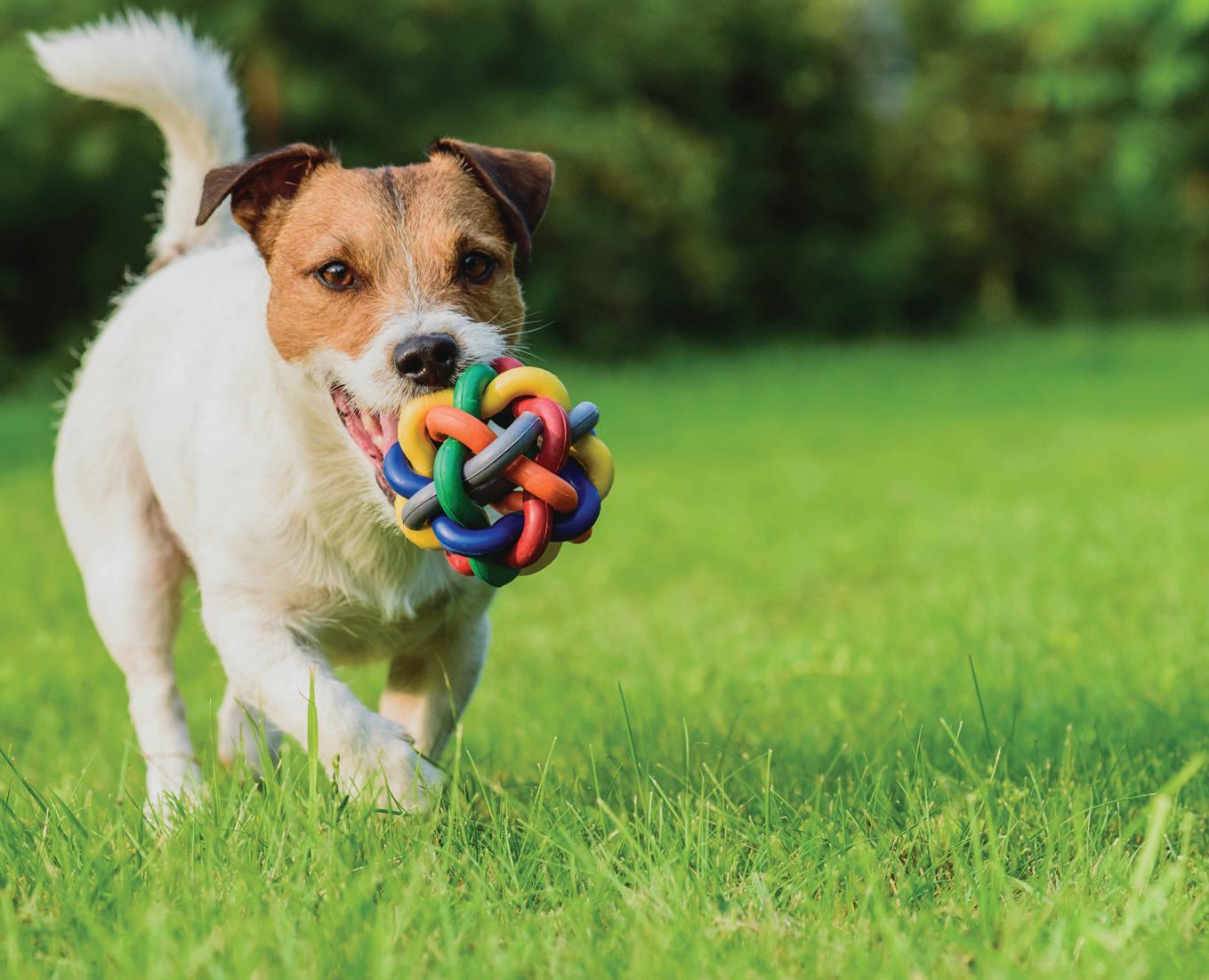



Reader Submitted Photos
Would your dog like to be a part of Doggie Socials? Submit your quality photos to creative@grandlivingmag. com or simply post it on our social media. You can find us on Facebook and Instagram.



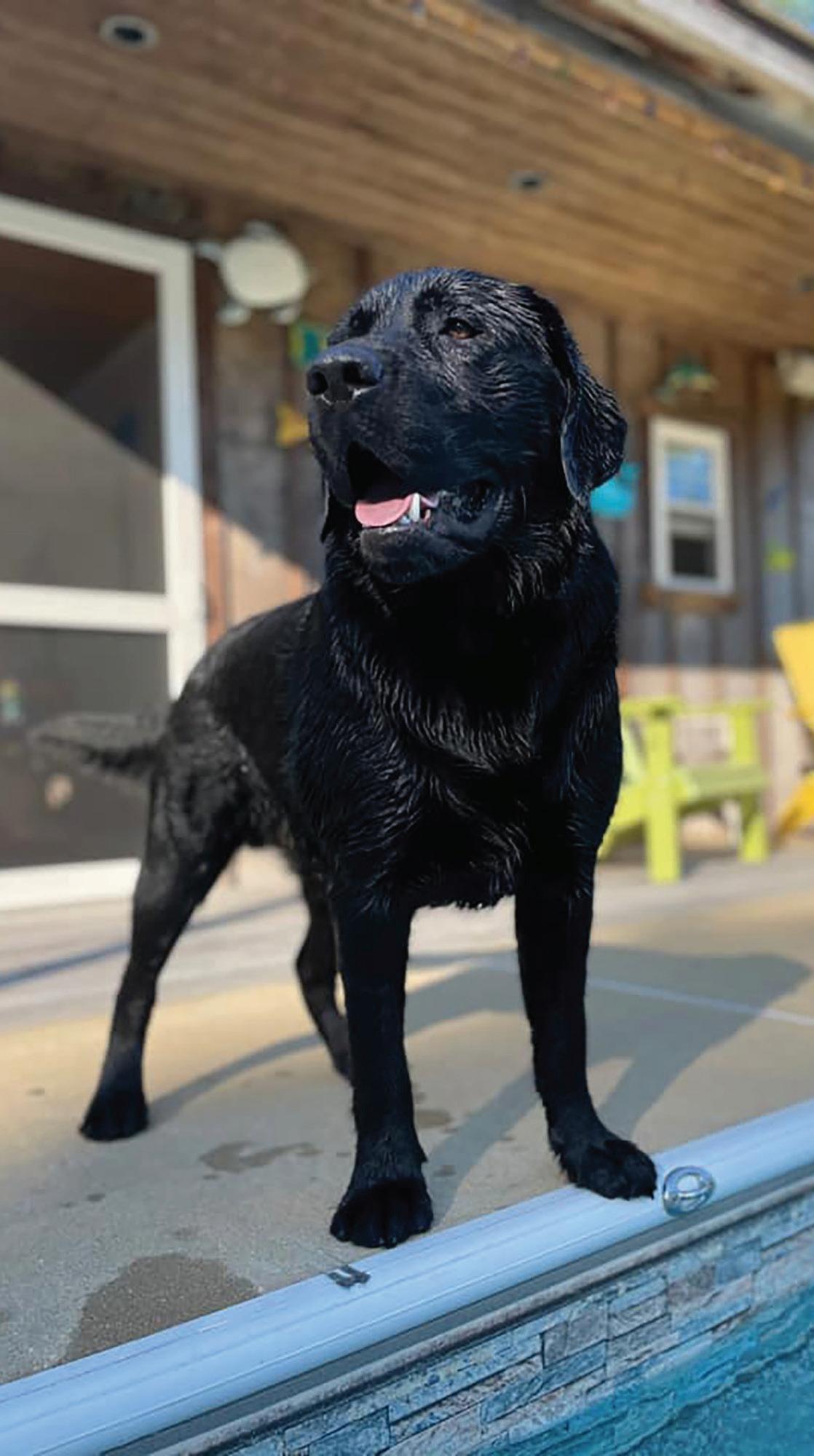
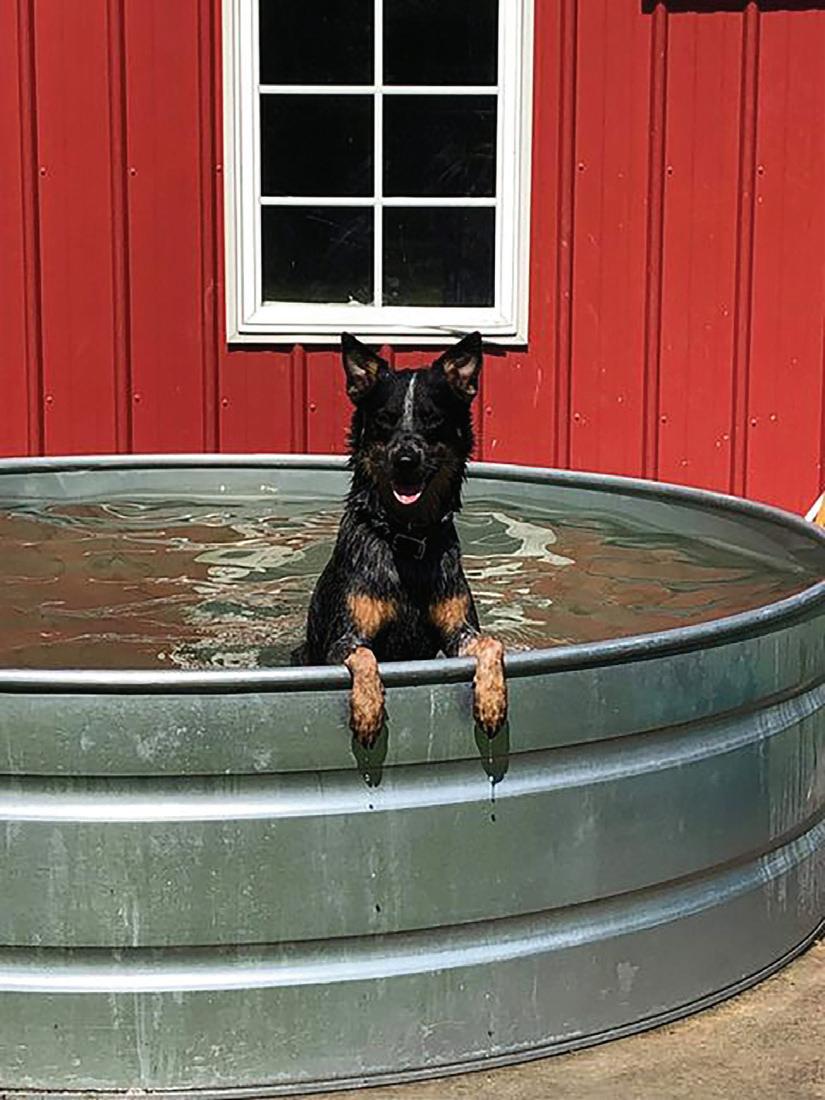
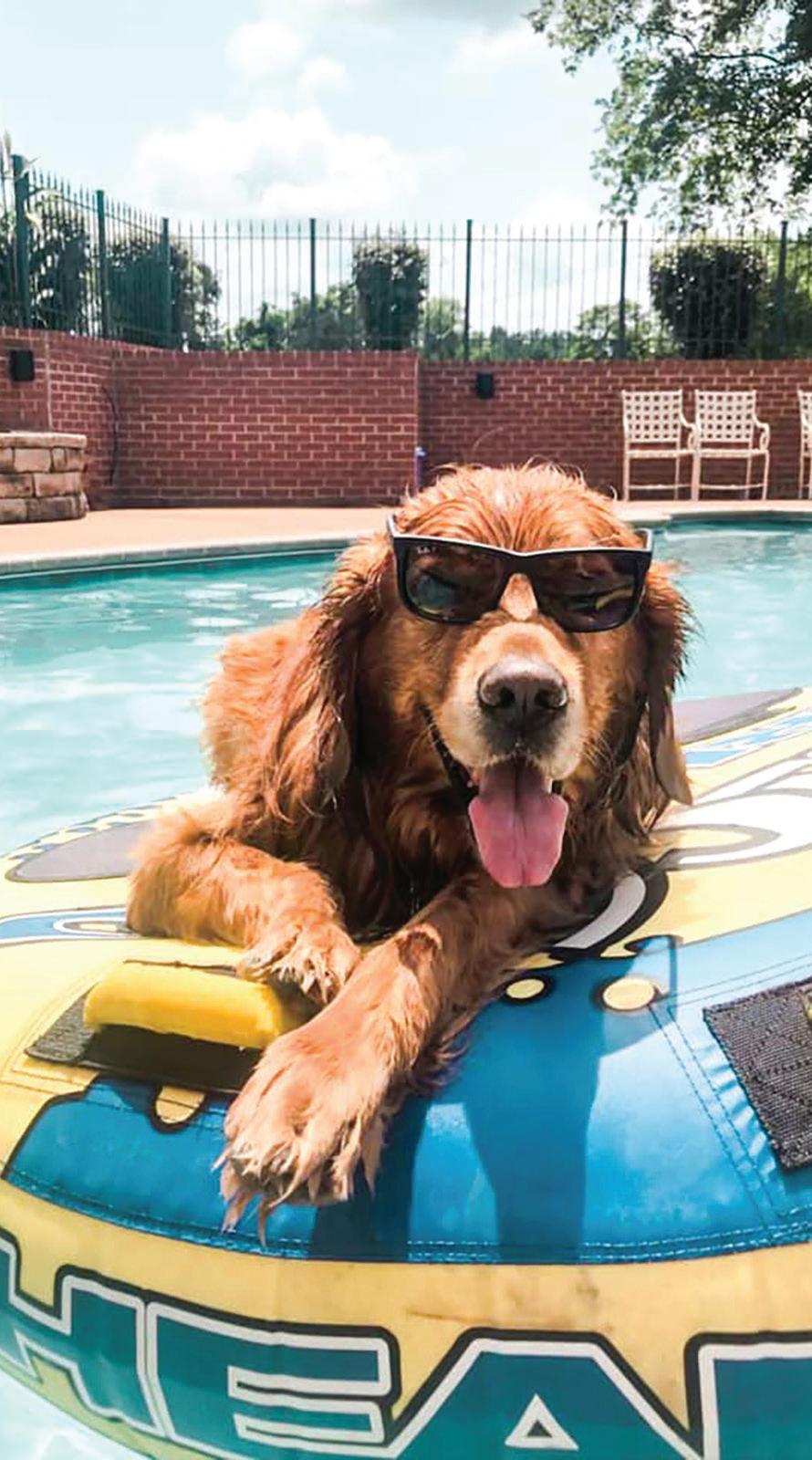
 Carter
Bogey
Darby Taz
Carter
Bogey
Darby Taz

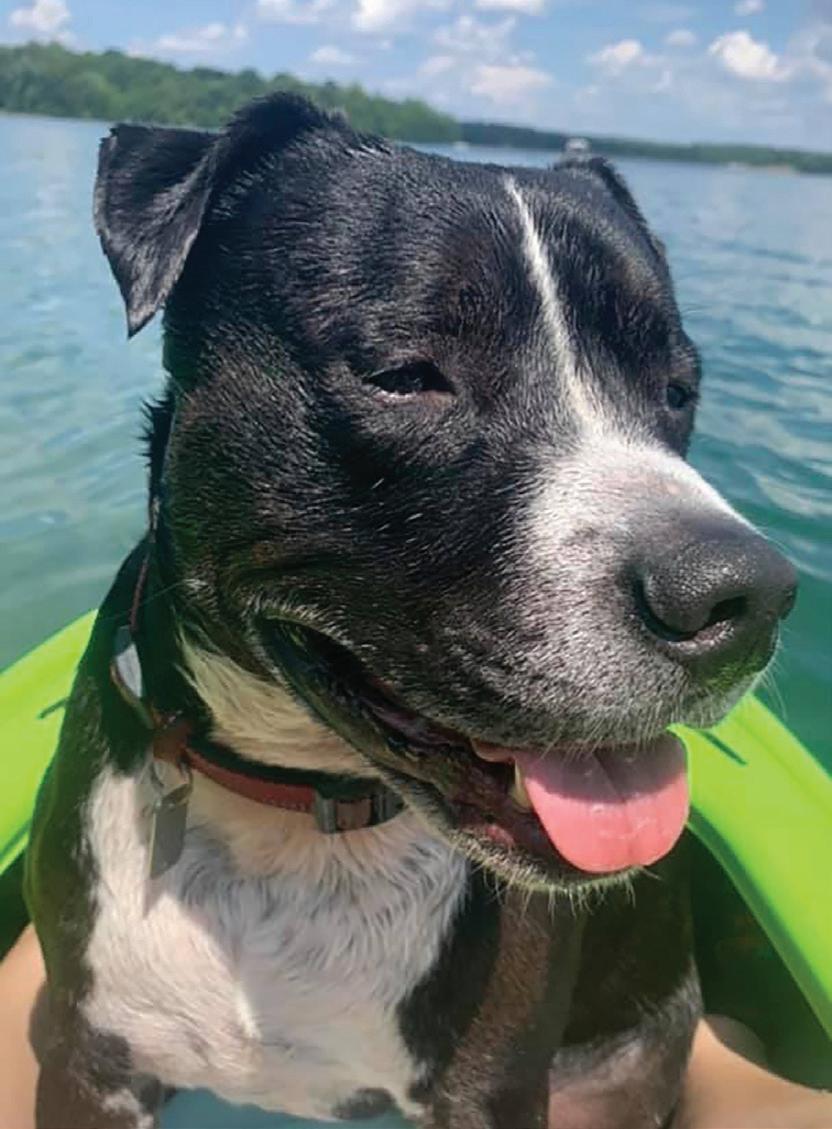
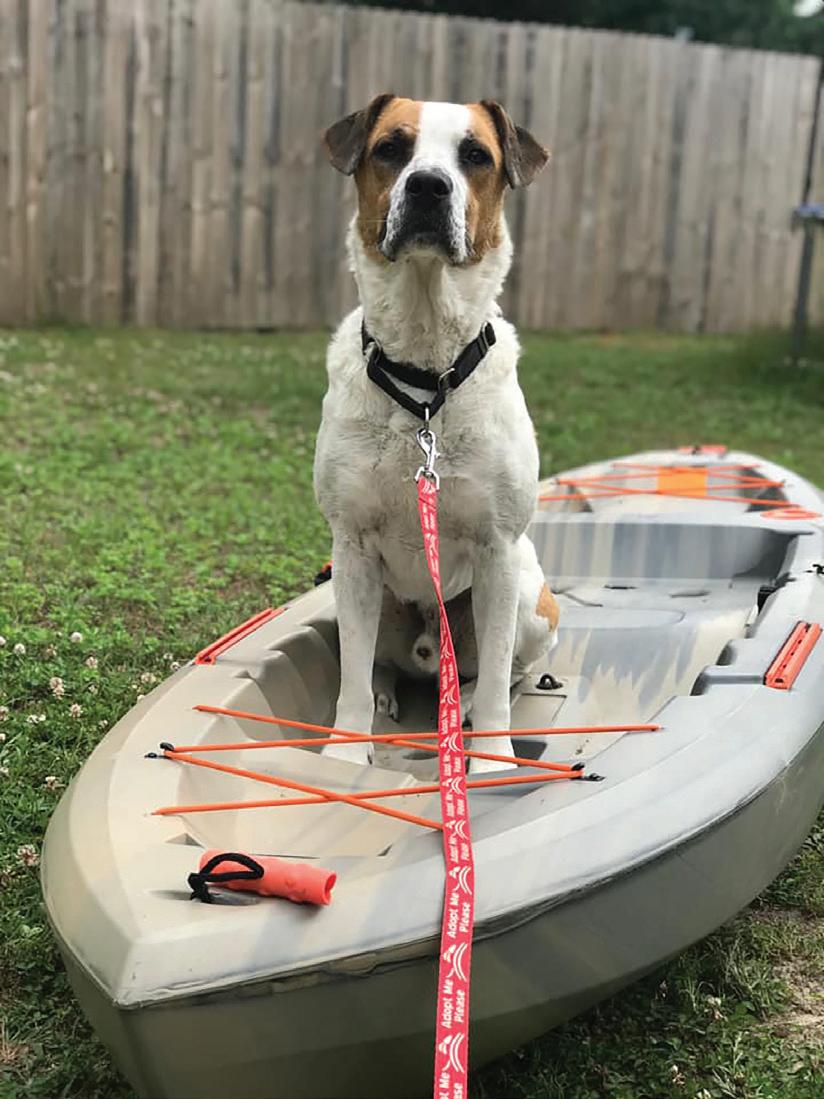

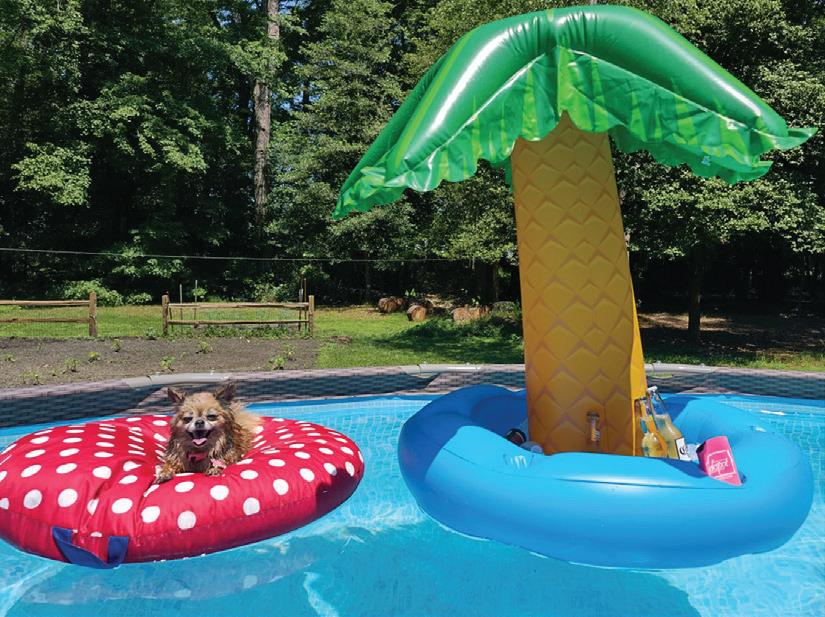 46 Delmarva Unleashed
Late Summer 2021
Yeti Seal
Chloe
Bru & Chloe
Stassi
46 Delmarva Unleashed
Late Summer 2021
Yeti Seal
Chloe
Bru & Chloe
Stassi



410-228-3090
Rescues Baywater Animal Rescue Baywateranimalrescue.org
Brandywine Valley SPCA
Georgetown bvspca.org
302-856-6361
Caroline County Humane Society carolinehumane.org
410-820-1600
Chesapeake Cats & Dogs chesapeakecatsanddogs.org
CVC New Beginnings Vizsla Rescue cvcweb.org/rescue
DASH (Dachshund & Small Hound Rescue) DashRescue.net
Delaware Humane Association delawarehumane.org
Wilmington 302-571-0111 Rehoboth Beach 302-200-7159
Dogs Deserve Better-Eastern Shore dogsdeservebetteresva.org/
Dogs Deserve Better- Blue Ridge dogsdeservebetterblueridge.org/
Dogs Deserve Better- Smithfield dogsdeservebetter.org
GRREAT (Golden Retriever) GRREAT.org
Hill Hounds Animal Rescue
hillhounds.org
410-714-3677
Homeward Bound Schnauzer Res. Hbschnauzerrescue.com
Kindness Matters Rescue shoshino@aol.com
K-9 Rescue of the Eastern Shore K9RescueES.org
Labs4Rescue Labs4Rescue.com
Lu’s Labs Labrador Retriever Rescue luslabs.org
703-888-2612
MaPaw Siberian Husky Rescue sibes.com
610-369-0055
Mid-Atlantic Great Dane Rescue League magdrl.org
Mid Atlantic IG Rescue midatlanticiggyresuce.com
Mid Atlantic Jack Rescue majr.org
908-963-3465
One More Dog onedogmore.org
302-632-6680
Operation Paws for Homes ophrescue.org
Playa Animal Rescue (Mexico) playanimalrescue.org
Renee’s Rescues reneesrescues.org
Sgt. Peppers Friends (Aruba) sgtpeppersfriends.com
Somerset County Dog Control 410-651-0986
Sussex County Animal/Whimsical Animal Rescue DelawareRescue.com
Talbot Humane talbothumane.org 410-822-0107One
The Sato Project (Puerto Rico) thesatoproject.org
Wags & Wishes wagsandwishes.org 410-476-8629
Wicomico Humane wicomicohumane.org 410-749-7603
Worcester Cty Animal Control 410-632-1340
Worcester Humane worcestercountyhumanesociety.com 410-213-0146
great adoptable dogs ...and offers low cost spay/neuter! Dogs $100 Cats $50 Microchips $25


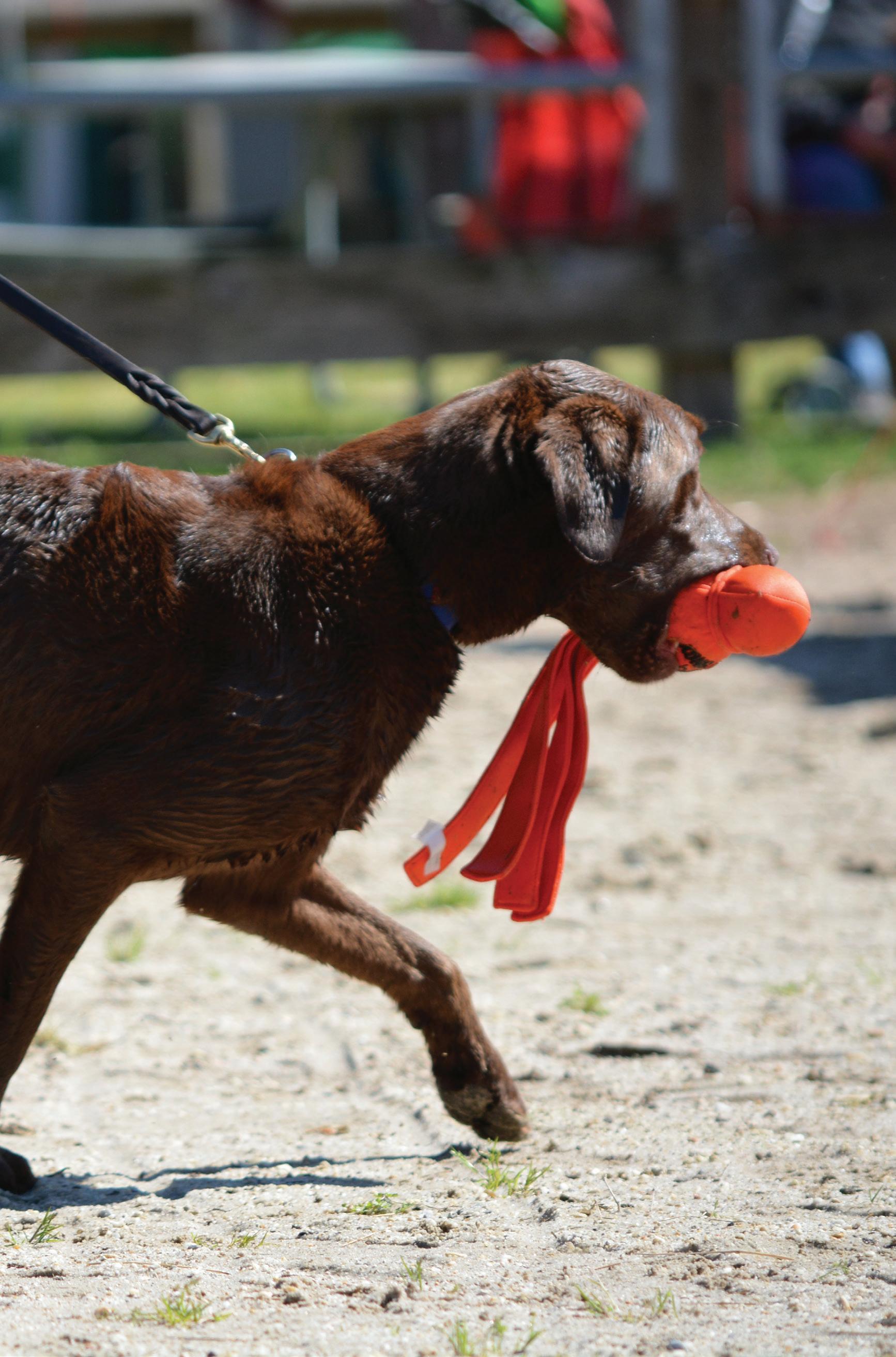
Heading


